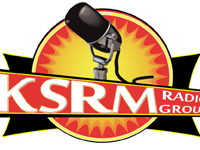Tobacco use in Alaska is trending down, but state health officials say it remains a top cause of preventable death—and progress isn’t reaching everyone equally.
According to the Alaska Tobacco Prevention and Control Program’s (TPC) FY2024 annual report, smoking rates among adults have declined to 16%, down from over 25% in the late 1990s. Among Alaska Native adults, the rate dropped from 41% in 2013 to 29% in 2022.
Teen vaping, which spiked in recent years, also showed a decline—17% of high school students reported using e-cigarettes in 2023, down from 26% in 2019. Still, nearly a quarter of Alaska teens reported using some form of tobacco or nicotine last year.
The state’s Tobacco Quit Line served over 1,800 Alaskans in FY2024, including people with behavioral health conditions and women who were pregnant or planning to be. Nearly half of those enrolled heard about the program through public outreach campaigns.
Despite progress, tobacco continues to carry a heavy toll. An estimated 600 Alaskans die each year from smoking-related illnesses. Health care costs tied to tobacco use total hundreds of millions annually, including $192 million in Medicaid spending.
The report also highlights disparities. Alaska Native people and adults living in poverty remain more likely to use tobacco and less likely to have access to health care or cessation resources.
The state invested $6.5 million in tobacco prevention and cessation programs in FY2024, using settlement and tax funds, with another $1.28 million coming from federal grants. The report says community-level programs, policy changes, and educational campaigns have all played a role in reducing use.
While the numbers are moving in the right direction, health officials say there’s still work ahead—especially when it comes to protecting young people and expanding access to help.

